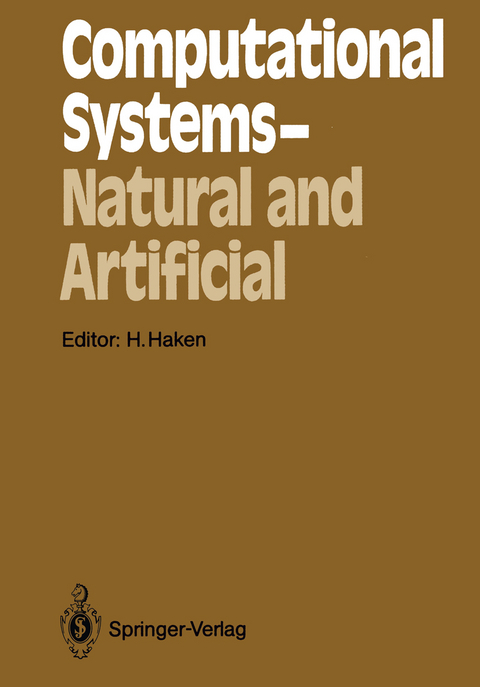
Computational Systems — Natural and Artificial
Springer Berlin (Verlag)
9783642730917 (ISBN)
Hermann Haken is Professor of the Institute for Theoretical Physics at the University of Stuttgart. He is known as the founder of synergetics. His research has been in nonlinear optics (in particular laser physics), solid state physics, statistical physics, and group theory. After the implementation of the first laser in 1960, Professor Haken developed his institute to an international center for laser theory. The interpretation of the laser principles as self organization of non equilibrium systems paved the way to the development of synergetics, of which Haken is recognized as the founder. Hermann Haken has been visiting professor or guest scientist in England, France, Japan, USA, Russia, and China. He is the author of some 23 textbooks and monographs that cover an impressive number of topics from laser physics to synergetics, and editor of a book series in synergetics. For his pathbreaking work and his influence on academic research, he has been awarded many-times. Among others, he is member of the Order "Pour le merite" and received the Max Planck Medal in 1990.
I Introduction.- Synergetic Computers for Pattern Recognition and Associative Memory.- II Natural Computational Systems.- The Representation of Space-Time in the Human Visual System.- Neuronal Mechanisms of the First, Second, and Third Order Contrast in the Visual System.- A Model of Figure/Ground Separation Based on Correlated Neural Activity in the Visual System.- Self-organization of the Visual Information Channel and Solitons.- Human Brain EEG Fields: Micro-states and Their Functional Significance.- Spatio-Temporal Analysis of Multi-channel Alpha EEG Map Series.- III Pattern Analysis and Pattern Formation.- Singular System Analysis of Time Series Data.- Geometrical Principles of Pattern Formation and Pattern Recognition.- IV Spin Glass Models and Neural Networks.- Dynamics of Spin Glasses and Related Models of Neural Networks.- Mean-Field Theory of Spin Glasses and Neural Networks with Finite Coordination Number.- Neural Networks for Associative Memory Design.- V Physical Devices.- Towards the Quantum Computer: Information Processing with Single Electrons..- Chaos and Pulsating Instabilities in Lasers.- VI General Computational Processes.- Systems with Statistically Coupled Processors.- Chaotic Dynamical Systems as Machines..- Digital and Analog Approach to Intermittencies and 1/f Noise in a Nonlinear Helmholtz Oscillator..- VII Robotics.- Towards Automatic Error Correction in Robots: Inferring the Task from the Program..- Index of Contributors.
| Erscheint lt. Verlag | 21.12.2011 |
|---|---|
| Reihe/Serie | Springer Series in Synergetics |
| Zusatzinfo | VIII, 215 p. |
| Verlagsort | Berlin |
| Sprache | englisch |
| Maße | 170 x 242 mm |
| Gewicht | 401 g |
| Themenwelt | Naturwissenschaften ► Physik / Astronomie ► Allgemeines / Lexika |
| Naturwissenschaften ► Physik / Astronomie ► Theoretische Physik | |
| Schlagworte | animals • Chaos • Dynamical system • Dynamical Systems • Fields • Field Theory • Insects • Neural networks • Neurobiology • paper • perception • Space-time • Spin • Synergetics • tissue |
| ISBN-13 | 9783642730917 / 9783642730917 |
| Zustand | Neuware |
| Informationen gemäß Produktsicherheitsverordnung (GPSR) | |
| Haben Sie eine Frage zum Produkt? |
aus dem Bereich


